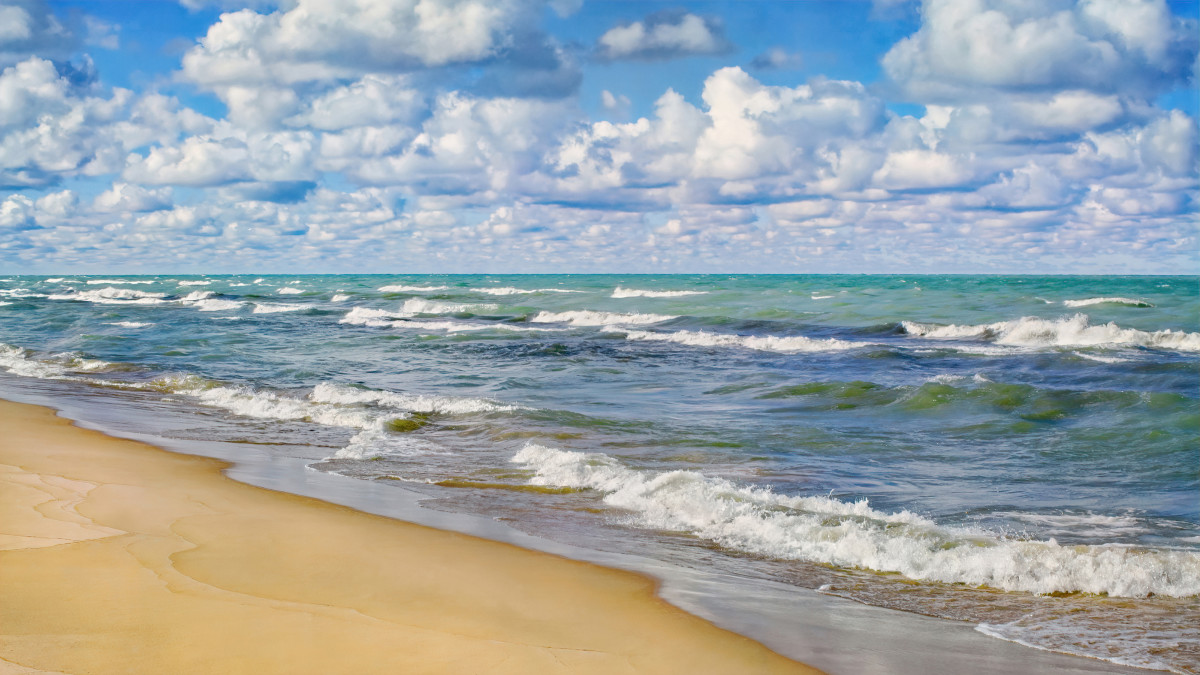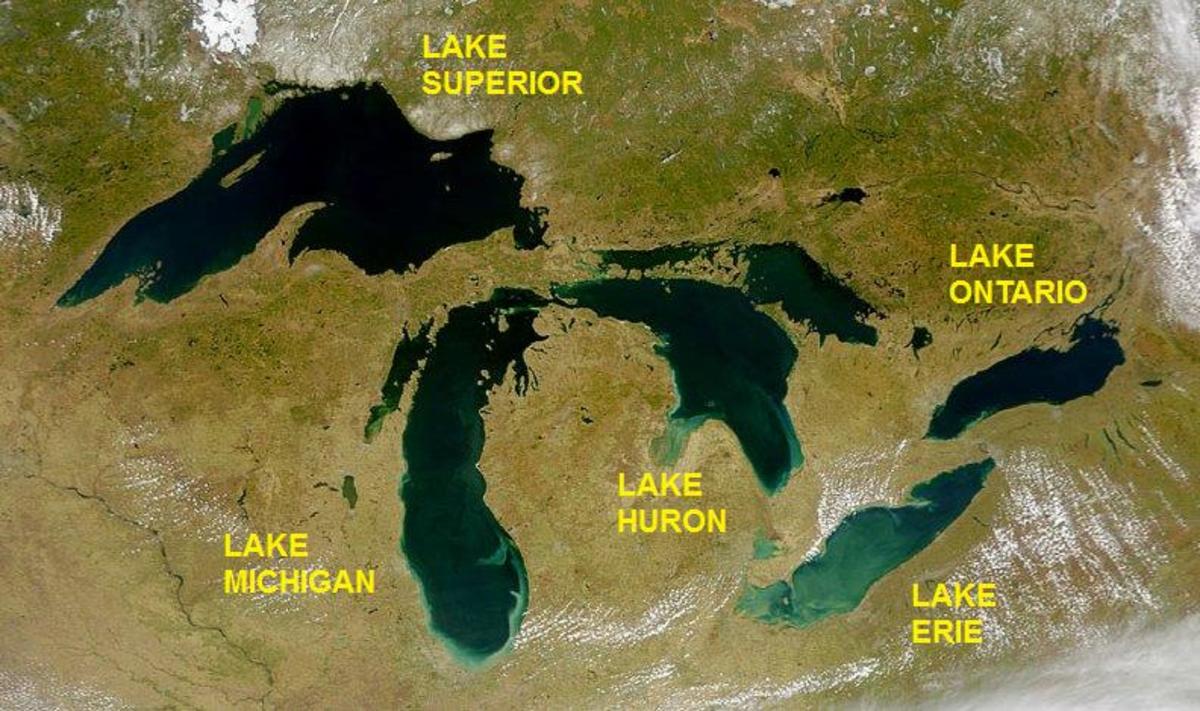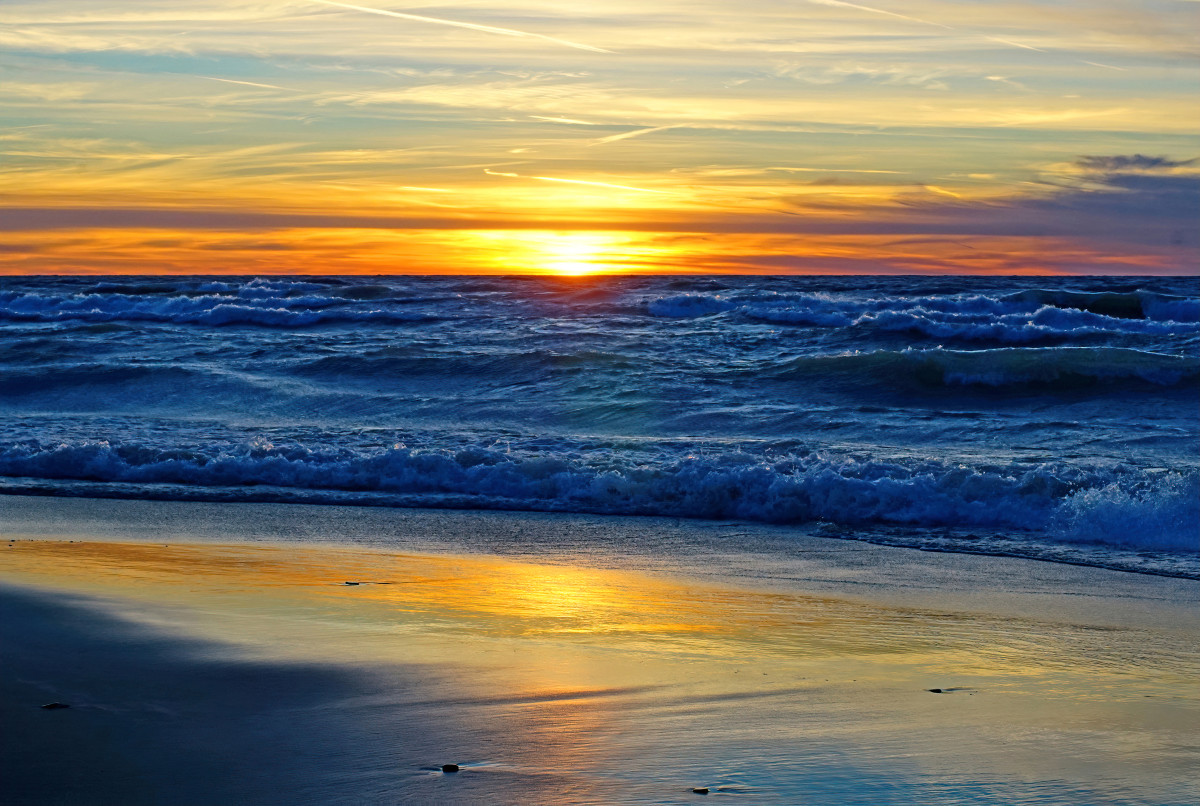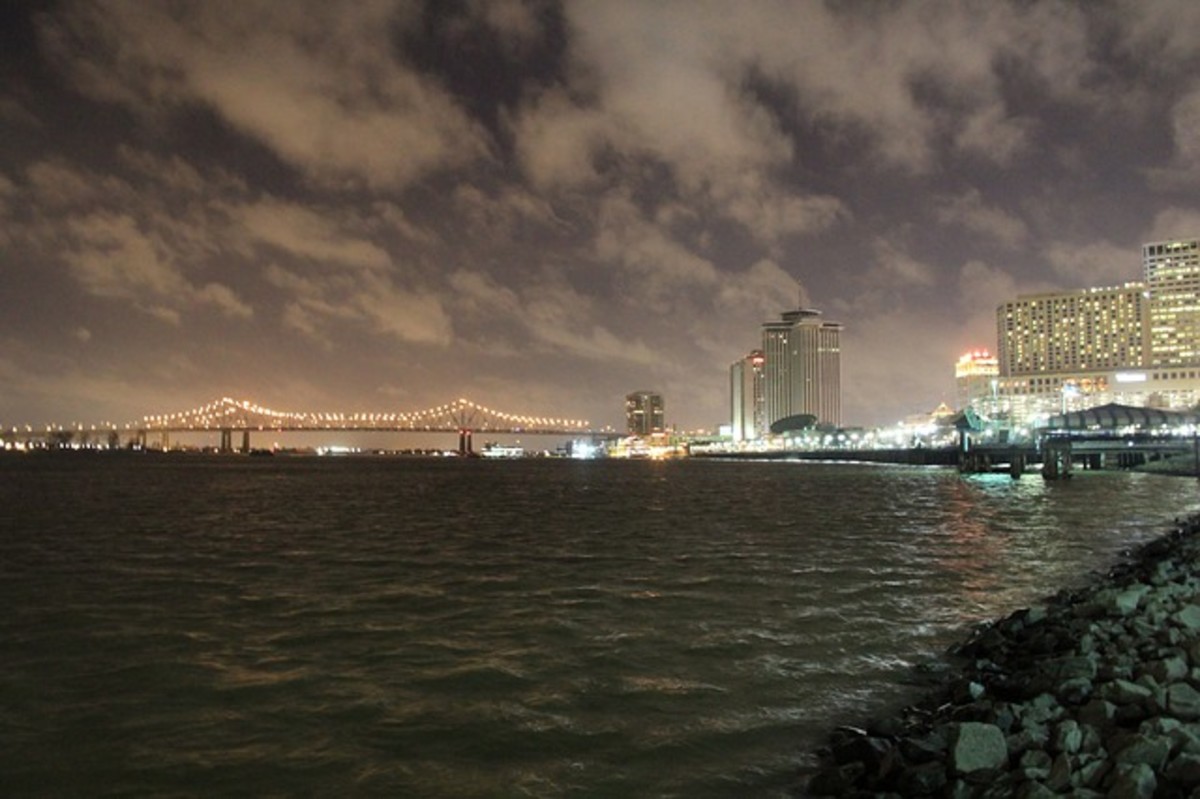The Great Lakes Crisis
water. A terrible thing to waste

The Great Lakes are facing an ecological crisis
The Great Lakes are made up of five large freshwater lakes and several smaller bodies of water. Combined, the Great Lakes make up the largest fresh water source in the world. They hold 22% of the planet’s fresh water. The lakes cover 95,000 square miles (Nearly the size of the United Kingdom) and a total shoreline of 10,500 miles. The names of the lakes are Superior (the largest fresh water lake in the world), Erie, Michigan, Huron and Ontario.
The Great Lakes basin is located along the international boundary between the United States and Canada. (Except for Lake Michigan, which is totally within the USA.) The basin includes eight US states…Minnesota, Wisconsin, Illinois, Indiana, Michigan, Ohio, Pennsylvania and New York. It also includes the Canadian province of Ontario. The lakes are connected to several rivers and canals, allowing ships to move merchandise over a larger area. The lakes are connected to the ocean by the St. Lawrence Seaway, which allows international commerce.
There are several different ecological scourges threatening the lakes region now. This is a quick look at the most serious problems.
First of all, we have the threat of invasive species. Ever since the St. Lawrence Seaway opened the lakes to seagoing vessels, approximately 160 types of invasive species have entered the Great Lakes, disrupting the region’s ecological balance. Many of them have entered the lakes via the Seaway from the Atlantic Ocean. Another way these harmful species have arrived is via ballast water from cargo ships. Some small sea creatures hitchhike in the water cargo ships use for ballast. When ships pump out their remaining ballast water, they dump new species into the lakes, affecting the regions biodiversity. Of these new species, the most harmful are Sea Lampreys, Zebra Mussels, Eurasian Ruffes and Asian Carp.
The Sea Lamprey are aggressive, predator eels who latch onto fish and feed off them like parasites until the fish dies. Zebra Mussels are filter feeders that strain the food and nutrients out of flowing water, making it unlivable for other fish. The Eurasian Ruffe is a spiny fish that spends its days in deep water and feeds at night on fish like the yellow perch and the trout perch, which are heavily sought after by fisherman, thereby affecting the fishing industry.
Worst of all is the Asian Carp. This predatory flying fish is generally two or three feet long and can weigh over 30 pounds. They were originally imported to America from China to clear algae and parasites from ponds in Arkansas and Mississippi. In 1993, flooding caused these fish to enter the Mississippi River and they have slowly moved up the Illinois River to the Lake Michigan Inlet. The carp can eat 40% of their weight per day and they eat the food that other fish rely on. They consume every part of the aquatic eco-system and could destroy the bio-diversity of the Great Lakes. Also, these flying fish can breech 10 feet into the air and have been known to injure boaters. They could cause chaos in a heavily sailed area like the Great Lakes.
In a desperate effort to keep these very harmful fish out of the Great Lakes, an underwater electric barrier was constructed south of Chicago, at the Chicago Ship and SanitaryCanal. Built in 2004, the barrier consists of two rows of electrodes spanning the bottom of the river, 200 feet apart. Any fish entering the zone will get a shock. The hope is that these shocks will condition the carp to avoid the area and not proceed further to the Great Lakes, where they would run rampant through the indigenous creatures.
Another problem is the outbreak of Cyano-bacteria or blue/green algae, which has occurred in recent years. The intrusion of Zebra Mussels may be the cause, since Mussels promote algae growth. Decaying green algae has been fouling Lake Michigan’s shoreline, as organisms trapped in the algae rot, releasing a bad odor. Decaying green algae has been found well over 30 feet from the shore due to wave action. But it’s more than just an aesthetic and olfactory problem. Botulism has been found in these bacterial algae. The diseased algae is responsible for killing Seabirds. A bigger problem is that some indigenous lake creatures, like crabs, may carry the disease up the food chain to humans. Infected algae on the shore have caused the deaths of many dogs and even affected some children.
Massive blue/green algae blooms can cause oxygen depletion. Aquatic creatures rely on Oxygen that is dissolved in the water. Green algae uses up oxygen faster than it can be replenished by the air. More algae means less oxygen for other fish to breath.
Industry run-off and sewage discharge are another problem. Recently, over 500 million gallons of waste water got into Lake Michigan when the third largest combine sanitary and storm sewer system overflowed. Several years back, Imperial Oil dumped 1,500 gallons of oil into Erie (And said nothing to the public). Heavy metal toxicity is also a threat.
Lake Erie is in the heart of the Petro-chemical industry. The lake is surrounded by oil refineries. Contaminants from these sites constantly get into the water. Erie is the most polluted of the Great Lakes. It actually went on fire a few decades ago. There are “Dead Zones” in Lake Erie where nothing can live or grow.
Over-development of coastal areas is making the problem worse. Too many homes have been built along the lake shore. Runoff from agriculture and urbanization, such as using pesticides on lawns, causes chemicals to seep into the coastal landscape. Poorly managed septic systems also contributes to the problem. All this coastal contamination is affecting the lakeshore’s natural ability to adjust and heal.
A big cause for concern is the PCBs which are settling in the Lake’s sediments. PCBs (Polychlorinated biphenyls) are toxic chemical and carcinogens. The level of the contamination in the sediment affects bottom feeding fish. Plankton feeders that the salmon and trout rely on for food will soon be gone and the eco-system irrevocably disrupted. Also, Zebra mussels and Round Goby are carrying the toxins up the food chain.
Estrogen contaminants (chemicals that affect the body’s estrogen production) are present in the Lakes in high levels. Some fish are spontaneously changing sex. Testicular deformities have been found in frogs. The frogs are being found with both male and female genitalia. So if all this is happening to the lake and its creatures, what’s happening to the people who live along the lake shore? Statistically, birth rates in surrounding areas show a two-to-one ratio of girls to boys being born in recent years. There is also a higher miscarriage rate. Cancer levels in shore communities are also unusually high.
A growing problem is that water levels in the Great Lakes are at an unusually low level. Estimates show that the current levels are 1-3 feet lower than usual, depending on which lake. A strangely low amount rain and snowfall in the northern USA over the past decade has caused the water levels to ebb. Canals connecting to the Lakes have dried up. Lower lake levels affect coastal wetlands and the species who reside there.
Water levels also have a profound impact on the viability of commercial shipping and recreational boating. In some places, the water level is so low that boats can’t reach the boathouse and some boat launches can’t launch their boats. Also, shallower water levels mean that cargo ships can’t carry as much freight because heavier ships will scrape the bottom of the lake. The depth of the water regulates the type of traffic allowed, so the lowering depths are causing serious regulation confusion. Additionally, large rocks which were once so deep they weren’t a problem are now becoming a hazard to sea crafts.








